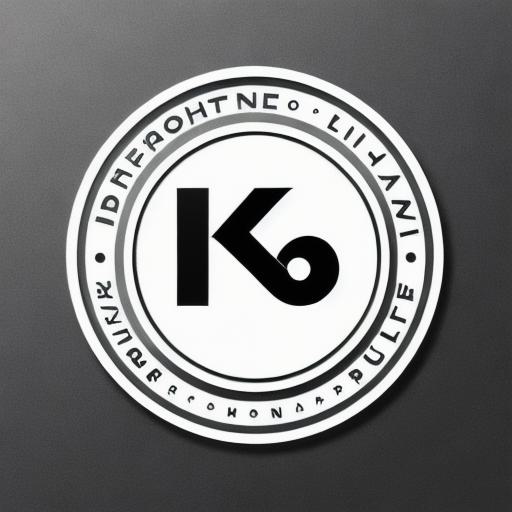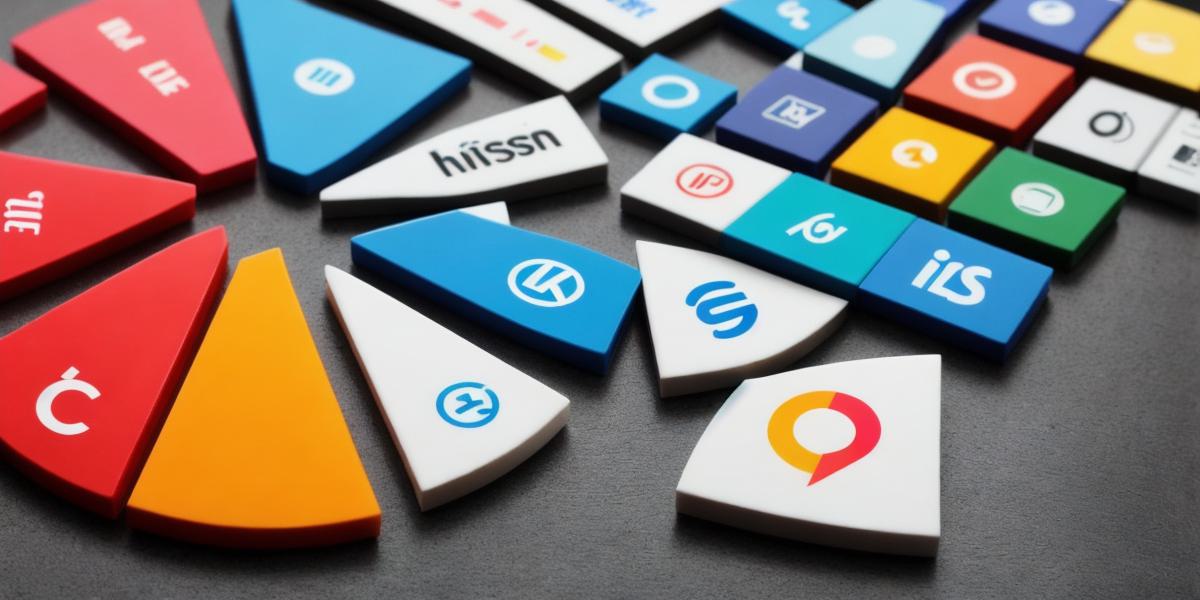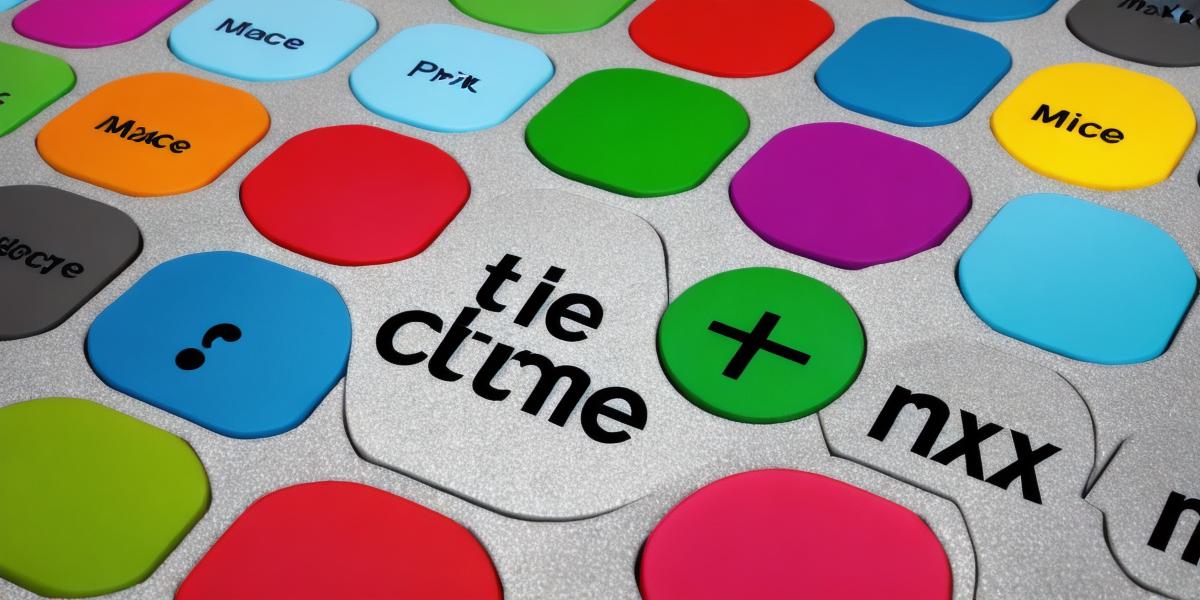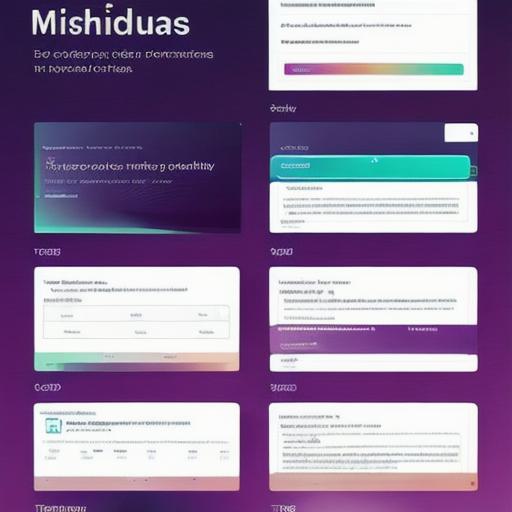Introduction
Logos are one of the most important elements of any marketing campaign, as they act as the visual representation of your brand and help establish your identity in the market. The design of a logo is critical in creating an emotional connection between your customers and your brand, making it essential for businesses to invest time and effort into creating an effective logo that resonates with their target audience. In this comprehensive guide, we will explore the key elements to consider when designing a marketing logo for your brand, including its purpose, the psychology of design, and how to create a memorable visual identity that effectively communicates your brand message.
The Purpose of a Marketing Logo
Before we delve into the key elements of designing an effective logo, it is important to understand the purpose of a logo in marketing. A logo serves as the visual identity of a brand and helps establish its presence in the market. It acts as a symbol that represents the values, goals, and personality of a brand, making it an essential element in building brand recognition and loyalty.
A well-designed logo can help differentiate your brand from competitors, create an emotional connection with customers, and increase brand awareness and recall. Moreover, logos can be used across various marketing channels, including print, digital, and social media, to promote your brand consistently and effectively.
The Psychology of Design: The Impact of Colors, Shapes, and Typography on Logo Design
Colors, shapes, and typography are all important design elements that can have a significant impact on the perception of a logo and the emotions it evokes in customers.
Colors are one of the most critical design elements that can influence the mood and personality of a brand. Different colors have different meanings and associations, and choosing the right color palette for your logo can help create an emotional connection with customers. For example, blue is often associated with trust and professionalism, while red is associated with passion and energy.
Shapes are another important design element that can affect the perception of a logo. Shapes can be used to communicate different ideas and emotions, such as stability (square or circle) and movement (curve or diagonal). The choice of shape will depend on the personality and values of the brand.
Typography is also an essential design element that can impact the readability and perception of a logo. Choosing the right font type and size can help create a balance between legibility and visual appeal, while also reflecting the personality and values of the brand.
The Key Elements to Consider When Designing a Marketing Logo
Now that we have a better understanding of the purpose and psychology of design, let’s explore the key elements to consider when designing a marketing logo for your brand.

- Simplicity: A simple logo is easier to remember and recognize, making it more effective in creating brand awareness and recall. A complex logo can be confusing and difficult to read, which can lead to negative associations with your brand.
- Memorability: A memorable logo should be easily recognizable and distinguishable from competitors. It should be unique and not too similar to other logos in the market.
- Relevance: The design of a logo should be relevant to the brand’s products or services, as well as its target audience. A logo that is not relevant can be confusing and disconnect customers from the brand.
- Flexibility: A flexible logo can be used across various marketing channels, including print, digital, and social media, without losing its effectiveness. It should be scalable and adaptable to different sizes and formats.
- Emotional Connection: The design of a logo should evoke emotions that are consistent with the brand’s values and personality. A logo that creates an emotional connection can help establish brand loyalty and increase customer engagement.
Case Studies: Real-Life Examples of Effective Marketing Logos
Let’s take a look at some real-life examples of effective marketing logos to see how these key elements are applied in practice.
- Apple: The design of the Apple logo is simple, memorable, and relevant to the brand’s products and values. The use of the apple symbol creates an emotional connection with customers, while the clean, minimalist typography reflects the brand’s focus on innovation and simplicity.
- Nike: The Nike logo is easily recognizable and distinctive from competitors, making it highly memorable. The use of the swoosh symbol evokes a sense of motion and energy, which is consistent with the brand’s values of speed, agility, and performance.
- Coca-Cola: The Coca-Cola logo is simple, memorable, and emotionally connected to customers. The use of the iconic script font creates a sense of nostalgia and familiarity, while the color red represents happiness and energy.
- Amazon: The Amazon logo is flexible and adaptable to different sizes and formats, making it effective in both print and digital marketing. The use of the arrow symbol creates a sense of movement and direction, which is consistent with the brand’s focus on convenience and ease of use.
- McDonald’s: The McDonald’s logo is simple, memorable, and easily recognizable from its use of bright colors and bold typography. The use of the golden arches symbol creates a sense of fun and playfulness, which is consistent with the brand’s values of quality and value.

Personal Experiences: How Designing a Logo Can Impact Your Business
As a marketer myself, I have seen firsthand how designing an effective logo can impact a business. When I worked on a recent marketing campaign for a local restaurant, we spent weeks brainstorming and refining the design of their logo. We wanted to create a visual identity that reflected the brand’s values of authenticity, quality, and community.
After much discussion and research, we settled on a design that incorporated a vintage-inspired typeface with a hand-drawn illustration of a fork and knife. The result was a logo that was easily recognizable and memorable, creating an emotional connection with customers and establishing the restaurant as a local favorite.
The Impact of Designing a Logo on Customer Engagement and Loyalty
Research has shown that designing an effective logo can have a significant impact on customer engagement and loyalty. According to a study by Nielsen Norman Group, people can recognize logos from up to 100 feet away and remember them for an average of five years. Moreover, a well-designed logo can help create brand recognition and recall, making it easier for customers to engage with the brand and build loyalty over time.
Comparing Logo Design to Other Marketing Elements
When designing a marketing logo, it is important to compare it to other marketing elements such as slogans, taglines, and advertising campaigns. A logo should be used in conjunction with these elements to create a cohesive brand identity that resonates with customers across different marketing channels.
FAQs: Answering Common Questions About Logo Design
Q: What is the difference between a logo and a brand identity?
A: A logo is a visual representation of a brand, while a brand identity includes all design elements such as colors, typography, and imagery that create an emotional connection with customers.
Q: How long does it take to design a logo?
A: The time it takes to design a logo depends on the complexity of the design and the number of revisions required. It can take anywhere from a few weeks to several months to create an effective logo.
Q: What are the most common mistakes people make when designing a logo?
A: Some common mistakes include using too many colors, too much text, or not considering how the logo will look in different formats and sizes. It is important to keep the design simple, memorable, and relevant to the brand.
Conclusion: The Power of Logo Design in Marketing
Designing an effective logo is a critical component of creating a successful marketing campaign. A well-designed logo can help establish brand recognition, create emotional connections with customers, and increase customer loyalty over time. By considering key design elements such as memorability, relevance, flexibility, emotional connection, and personal experiences, businesses can create logos that resonate with their target audience and drive success.




